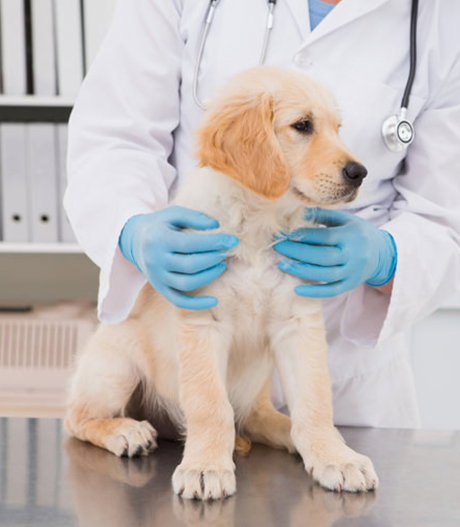The Value of Early Discovery: Insights From a Vet Oncologist
Early discovery of cancer cells in family pets is a crucial subject for animal proprietors and vet professionals alike. Vet oncologists highlight the importance of recognizing subtle indications that might show severe health problems. Typical signs commonly go undetected up until they escalate. Comprehending these early caution indications and innovations in diagnostic techniques can make a considerable difference. What steps can pet proprietors require to enhance their pet dogs' possibilities of early medical diagnosis and far better therapy end results?
Comprehending Cancer in Family Pets: Common Kinds and Signs
While lots of animal owners may not understand it, cancer cells is a significant wellness worry affecting animals, similar to it carries out in people. Typical sorts of cancer cells in pets include lymphoma, pole cell growths, osteosarcoma, and mammary tumors. These malignancies can materialize in different ways, depending upon their place and type. Signs typically consist of unexplained weight reduction, consistent vomiting, adjustments in cravings, or uncommon lumps and bumps. Pets might also display sleepiness, trouble breathing, or hesitation to workout, which can indicate underlying health problems. Early indications can be subtle, making it important for family pet owners to be observant of their pets' habits and physical problem. Recognizing these usual kinds and connected signs and symptoms can empower owners to seek veterinary treatment immediately, possibly resulting in earlier medical diagnosis and therapy choices. Identifying the indicators of cancer cells in animals is a crucial action towards enhancing their health and wellness and quality of life.
The Role of Vet Oncologists in Very Early Discovery
Veterinary oncologists play an important duty in the early detection of cancer in family pets, as their specialized training outfits them with the skills necessary to identify subtle indicators that may be neglected by family doctors. They make use of a mix of professional expertise and advanced analysis tools to analyze clients extensively - Board Certified Veterinary Oncologist. By recognizing very early symptoms and danger aspects, oncologists can assist pet dog proprietors toward prompt interventions, increasing the possibilities of successful treatment
Additionally, vet oncologists typically team up with basic professionals to develop screening methods customized to particular types or age, improving the performance of early discovery efforts. They enlighten pet dog owners on the relevance of regular examinations and understanding of changes in behavior or physical condition. Via these proactive measures, vet oncologists significantly add to boosting outcomes for pet dogs diagnosed with cancer, emphasizing the vital nature of their duty in veterinary medical care.
Breakthroughs in Diagnostic Techniques for Animal Cancer
Developments in diagnostic strategies have actually substantially enhanced the ability to identify cancer cells in pet dogs at earlier phases. Strategies such as sophisticated imaging, consisting of MRI and CT scans, give in-depth internal sights, allowing vets to recognize growths that may not be palpable. Furthermore, the development of minimally intrusive treatments, such as great needle aspirates and biopsies, makes it possible for accurate tasting of tissues for histopathological analysis with decreased tension for the pet.
Arising molecular diagnostics, including genetic screening and biomarker identification, are transforming the landscape of vet oncology. These methods can identify specific cancer cells types and forecast feedbacks to treatment, assisting in personalized treatment strategies. Developments in lab strategies, such as liquid biopsies, are beginning to provide non-invasive choices for keeping an eye on growth development and therapy effectiveness. Jointly, these technologies represent a substantial jump ahead in vet medicine, stressing the vital duty of early detection in boosting end results for animals detected with cancer.
Just How Pet Dog Owners Can Identify Warning Signs
How can pet dog owners become cautious in recognizing possible caution indicators of cancer cells? Understanding of physical and behavior adjustments in animals is necessary. Typical indicators include unusual sleepiness, anorexia nervosa, or unexpected weight adjustments. Pet dog proprietors must additionally take notice of persistent throwing up or diarrhea, which may signify underlying problems.
Adjustments in the skin, such as swellings, bumps, or sores that do not heal, warrant prompt vet interest. Furthermore, proprietors should keep in mind changes in alcohol consumption practices, raised urination, or difficulty in breathing. Unexplained limping or pain may also be indications of more significant conditions.
Routine vet check-ups can help determine these warning signs early. By maintaining a close monitoring of their pet dogs' health and habits, proprietors can play a key duty in early discovery, potentially bring about better end results need to cancer be detected. Acknowledging these indicators might greatly affect an animal's quality of life.
The Effect of Early Discovery on Treatment Outcomes
Early detection of cancer cells in pet dogs plays a necessary function in figuring out treatment outcomes, as it usually allows try this for a bigger series of therapeutic alternatives. When cancer is identified in its beginning, vets can apply less invasive therapies, increasing the chance of effective intervention. Early-stage cancers may additionally react much better to chemotherapy or radiation, leading to boosted survival prices and general quality of life for the animal.
Furthermore, timely medical diagnosis assists in an extra customized treatment plan, lining up with the certain demands of the animal. This can consist of customized drug programs or surgical interventions that are much less hostile. Alternatively, late-stage detection frequently leads to minimal options, much more aggressive therapies, and poorer diagnoses. As a result, the relevance of very early detection can not be overemphasized; it fundamentally modifies the trajectory of treatment, making it important for pet dog owners to remain vigilant for any kind of indicators of ailment in their precious friends.
Frequently Asked Inquiries

How Can Diet Regimen Impact Cancer Cells Danger in Pet Dogs?
Diet considerably influences cancer cells danger in family pets, as particular nutrients and food types more tips here can either promote or hinder lump growth. A well balanced, nutrient-rich diet plan may assist minimize the likelihood of developing cancer in pets.
Are Certain Types Extra Prone to Cancer cells?
Specific dog breeds, such as Golden Retrievers and Boxers, show greater cancer vulnerability because of hereditary predispositions. Some feline breeds likewise reveal increased cancer cells threats, highlighting the importance of breed-specific health awareness amongst animal proprietors.

What Are the Expenses Related To Early Cancer Cells Detection?
The costs connected with very early cancer detection can differ greatly, encompassing analysis tests, examinations, and prospective treatments - Veterinary Cancer Specialist. Purchasing these services frequently leads to better health and wellness end results, inevitably minimizing more comprehensive future medical costs
Can Vaccinations Prevent Cancer Cells in Animals?


Injections may minimize the danger of certain cancers in pet dogs, particularly those linked to viral infections. Nonetheless, their effectiveness differs, and pet owners must seek advice from vets for tailored guidance relating to vaccination and cancer avoidance strategies.
Exactly How Usually Should Animals Be Evaluated for Cancer?
Family pets need to usually be evaluated for cancer each year, specifically as they age or if they display danger elements. Routine vet examinations can help recognize potential problems early, boosting treatment results and overall health monitoring.
Early discovery of cancer in animals is a vital subject for pet dog proprietors and veterinary professionals alike. Early indications can be subtle, making it important for family pet proprietors to be observant of their pets' behaviors and physical problem. Veterinary oncologists play an important duty in the very early discovery of cancer cells in pets, as their specialized training outfits them with the abilities required to recognize subtle signs that may be overlooked by basic experts. By preserving a close monitoring of their pet dogs' health and wellness and behavior, proprietors can play a key function in early detection, potentially leading Read Full Report to far better end results must cancer cells be identified. Early discovery of cancer cells in animals plays a vital duty in determining therapy results, as it typically allows for a wider variety of healing options.